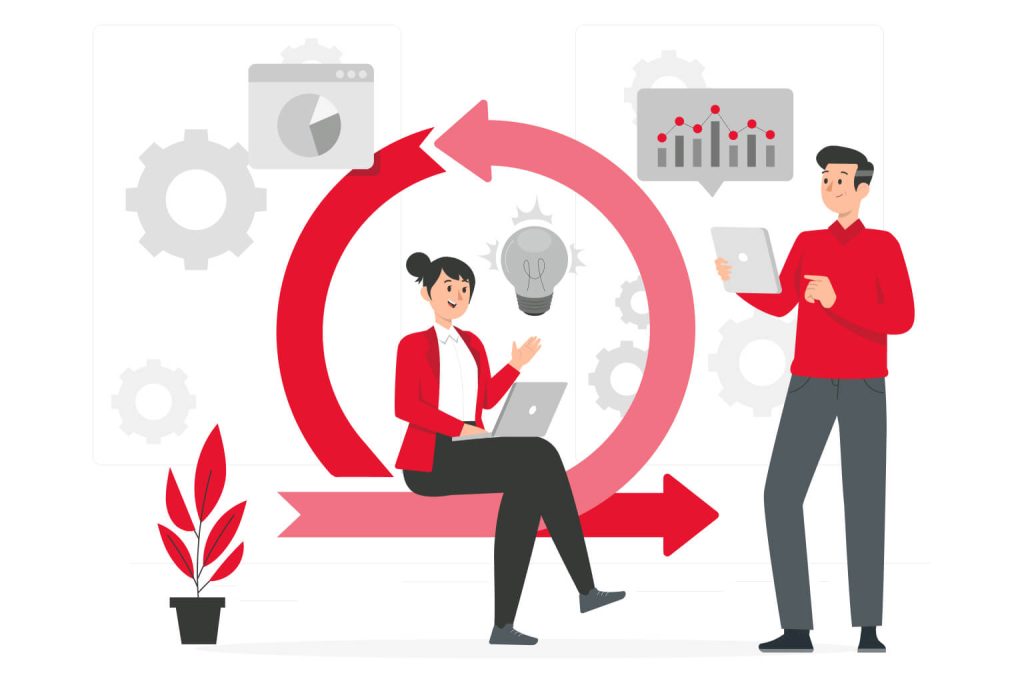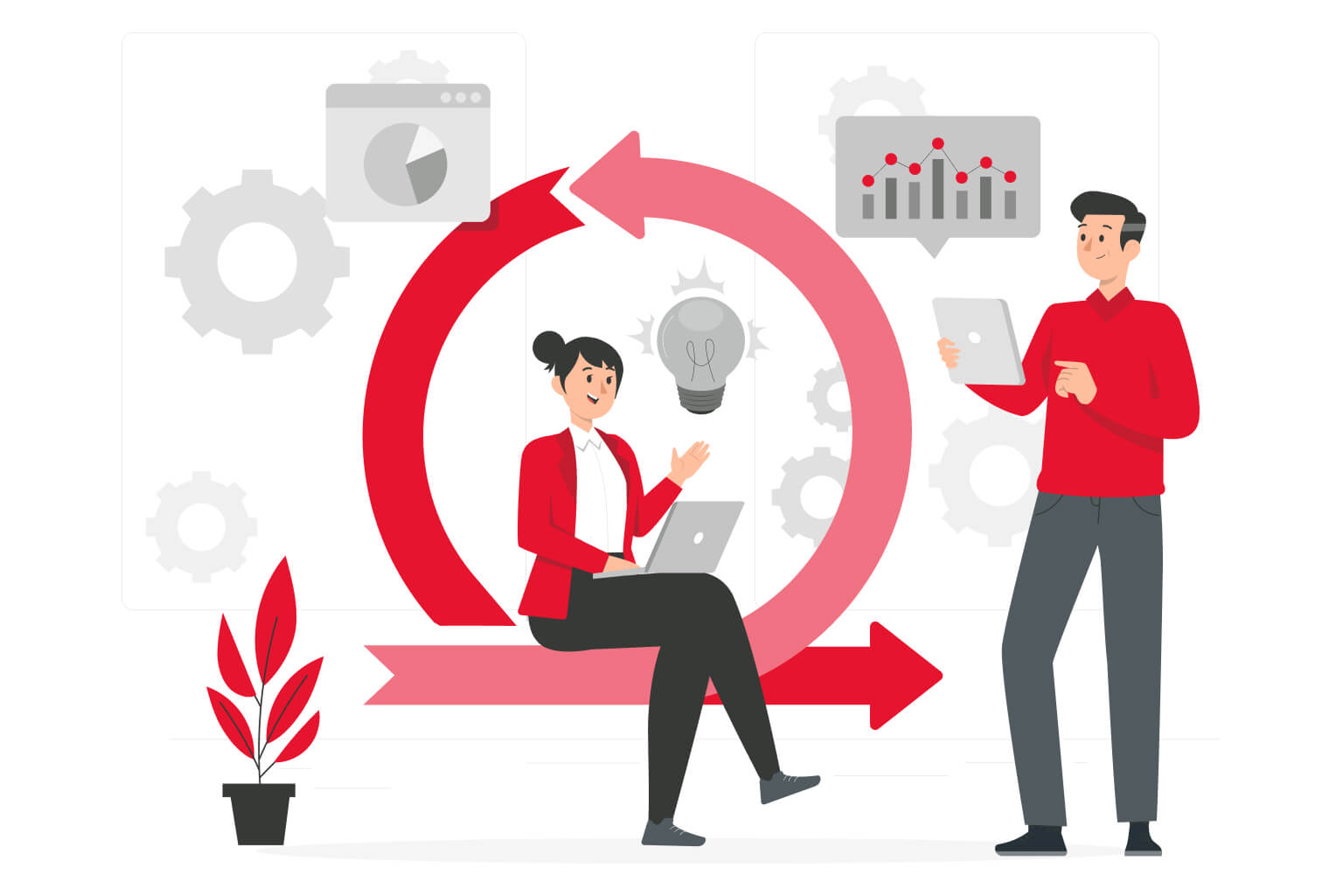
The most common software development methodologies in 2023
Table of Contents
Software development is an ever-evolving field that demands constant innovation and adaptation to stay ahead of the curve. As we approach the year 2023, the landscape of software development methodologies is set to undergo fundamental changes. New technologies and practices are emerging, and many existing methods are being refined and optimized to meet the increasing demands of today’s business environment.
In this blog post, we will explore the key software development methodologies that are expected to dominate the industry in 2023. From Agile development to DevOps, we will provide an in-depth analysis of each methodology, highlighting their advantages and disadvantages along with the best use cases for each. Whether you are a software developer, project manager, or business owner, staying abreast of the latest industry developments is crucial to achieving success in today’s digital world.
1. Agile Software Development Methodology
Agile methodology is a project management approach that prioritizes flexibility, collaboration, and customer satisfaction. The method helps project teams to embrace change and deliver value to customers regularly. Agile methodology emerged in response to traditional project management approaches that relied on rigid processes and documents as a means of controlling projects.
The Agile Manifesto, published in 2001, outlines the principles that guide Agile methodology. It emphasizes the importance of individuals and interactions, working software, customer collaboration, and responding to change. The manifesto also recognizes the value of comprehensive documentation, but it prioritizes working products over documentation.
Agile methodology is structured around iterative and incremental development cycles that focus on delivering smaller pieces of functionality frequently. The iterative approach enables the project team to gather feedback early and often, allowing for changes and enhancements to be made as the project progresses. One of the key benefits of Agile methodology is that it fosters collaboration and communication among team members. The method emphasizes face-to-face communication and emphasizes the importance of transparency and accountability. Agile methodology also relies heavily on self-organizing teams that can adapt to changing requirements and priorities.
2. Waterfall Methodology
Waterfall Methodology is one of the most traditional project management methodologies. This framework divides the project into distinct phases, which should be executed in a sequential, linear order where each phase must be completed before moving on to the next one. The Waterfall methodology can be thought of as having five basic stages – Conception, Initiation, Planning, Execution, and Closure.
The first stage of the Waterfall Methodology involves conceiving the idea and defining the project requirements. During this stage, the project’s scope, objectives, and limitations are identified, and the initial project feasibility and viability assessments are conducted. In the second stage, initiation, the detailed project planning process is initialized, and the project team is identified. This stage lays the foundation of how the project will be executed and monitored. The planning stage is the most crucial phase of the Waterfall Methodology. During this stage, a detailed project plan is created, outlining all the project stages, activities, timelines, and resources required to complete the project successfully. Execution is the fourth phase where the actual project activities are executed and monitored as per the project plan. This stage involves the creation, web development, and testing of the project deliverables as per the predetermined timelines.
The final phase, closure, involves concluding the project and delivering the finalized project deliverables to the stakeholders. A thorough project evaluation and review are conducted to assess the project’s effectiveness, identify any opportunities for improvement, and develop final project documentation.
3. DevOps Methodology
DevOps methodology is an approach to software development and delivery that combines development (Dev) and operations (Ops) into a single continuous process. It is a set of practices and tools that aims to enable organizations to release high-quality software with greater speed and reliability.
At its core, DevOps is about breaking down silos between development, operations, and other stakeholders, and fostering a culture of collaboration, communication, and feedback. It involves automating repetitive tasks, using agile development methodologies, integrating testing and deployment, and implementing continuous delivery and monitoring. One of the key benefits of DevOps is that it helps organizations achieve faster time-to-market, which is crucial in today’s highly competitive business landscape. By enabling teams to work together more closely and speeding up the software delivery cycle, DevOps can accelerate innovation and product development.
Explore the benefits of our Product Discovery Workshops and why they are essential for your business’s success.
4. Scrum – Agile framework (Scrum Methodology)
Scrum methodology is a framework widely used in the world of software development. First introduced in 1995, this approach has gained a lot of popularity in recent years due to its efficacy in delivering high-quality software products on time and within budget.
The primary goal of Scrum is to maximize the value of the software product while minimizing the risks and uncertainties that come with large-scale software development projects. It allows development teams to work together in an iterative and incremental process, enabling them to respond better to the changing requirements of the projects.
One of the key principles of Scrum is the use of Sprints, which are short and time-boxed iterations of development. During a Sprint, the development team works on specific tasks and delivers a potentially releasable product increment by the end of the iteration. This approach ensures that the project progresses in a controlled and measurable way, with a focus on producing quality software at each stage.
5. Kanban Methodology
The Kanban methodology is a lean approach to project management, emphasizing the importance of visualizing workflow and limiting work in progress to achieve a smooth and efficient flow of work. It originated in the manufacturing industry, specifically in Toyota, and has since been adopted in various industries, including software development and healthcare.
At the core of the Kanban methodology is the Kanban board, a visual representation of work items and their status. Work items, represented by sticky notes or cards, are categorized into columns based on their respective stages of work, such as “To Do”, “In Progress”, and “Done”. By having a clear view of the status of all work items at any given time, teams can identify bottlenecks and optimize their workflow.
6. The Scaled Agile Framework (SAFe)
The Scaled Agile Framework (SAFe) is a potent methodology designed to help organizations manage and coordinate large-scale projects involving multiple teams. SAFe provides a comprehensive set of guidelines and best practices to enable the seamless integration of various teams, thereby improving the efficiency of the entire development process.
SAFe was founded on Agile principles, and it advances Lean product development, DevOps, and systems thinking to foster alignment, collaboration, and performance across all organizational levels. By integrating Agile values, principles and practices to a large-scale project management, SAFe has become an industry standard in software development.
SAFe is tailored to address the needs of enterprise-scale organizations seeking to keep pace with the rapidly-evolving business environment. It enables them to establish a clear governance structure and improve overall decision-making through a prescribed set of roles and responsibilities. SAFe boasts of its flexibility, allowing organizations to customize and adapt it according to their specific needs, environment and industry. This, in turn, enables organizations to optimize and continuously improve the process of product development to achieve better business outcomes.
The most common software development methodologies in 2023 – Conclusion
Different software development methodologies have their benefits and disadvantages. Nevertheless, selecting the best methodology requires careful consideration to ensure that the software product delivered to the client meets their expectations. By utilizing the techniques discussed above, software developers can be sure that their projects are delivered within the budget, scope, and time frame while meeting the desired quality standards.
In conclusion, choosing the right software development methodology is crucial in ensuring the success of any software project. By understanding the most common software development methodologies, software developers can assess the needs of their projects and select the most appropriate methodology that will deliver the desired outcomes efficiently.

